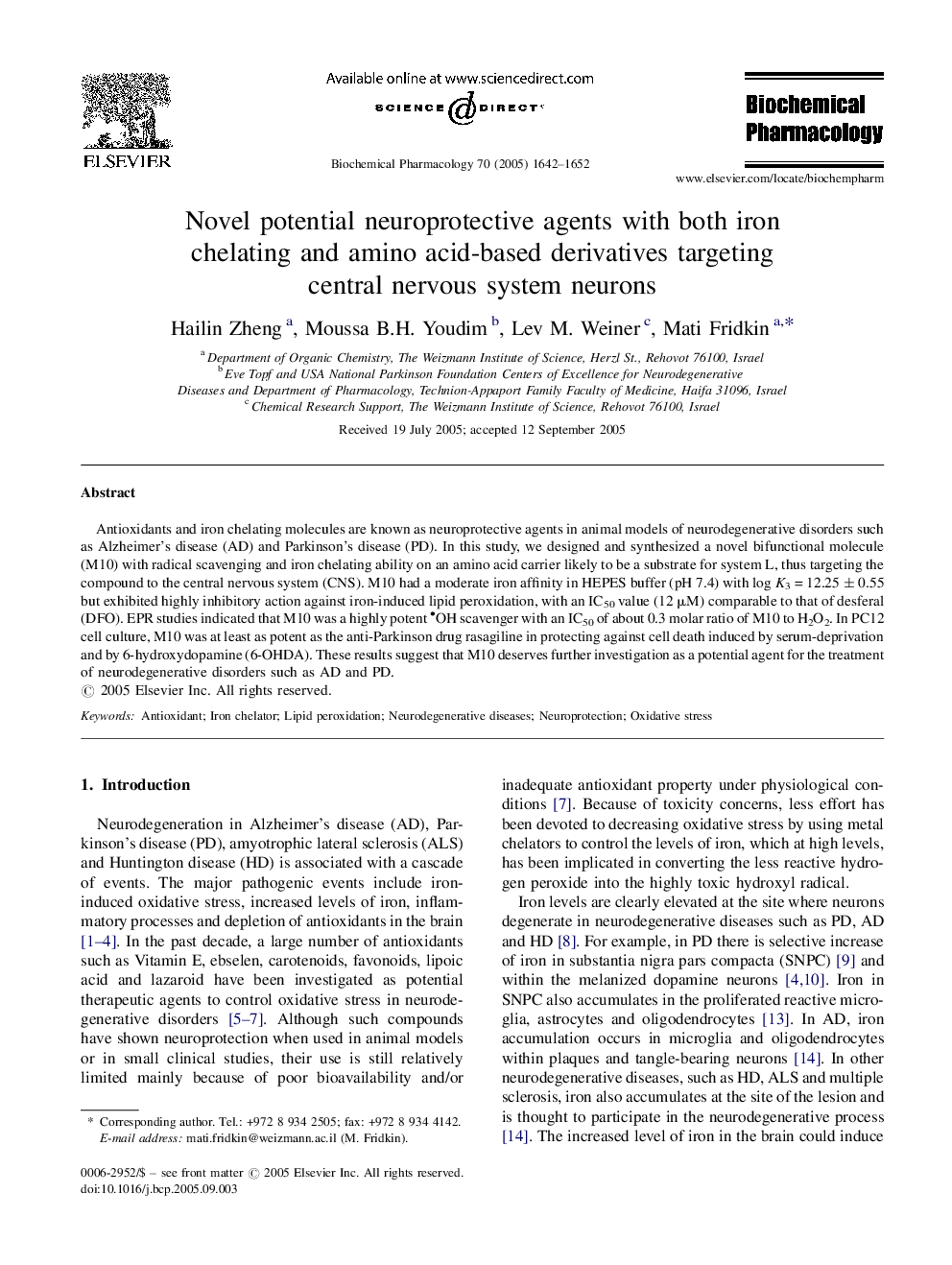| Article ID | Journal | Published Year | Pages | File Type |
|---|---|---|---|---|
| 9001539 | Biochemical Pharmacology | 2005 | 11 Pages |
Abstract
Antioxidants and iron chelating molecules are known as neuroprotective agents in animal models of neurodegenerative disorders such as Alzheimer's disease (AD) and Parkinson's disease (PD). In this study, we designed and synthesized a novel bifunctional molecule (M10) with radical scavenging and iron chelating ability on an amino acid carrier likely to be a substrate for system L, thus targeting the compound to the central nervous system (CNS). M10 had a moderate iron affinity in HEPES buffer (pH 7.4) with log K3 = 12.25 ± 0.55 but exhibited highly inhibitory action against iron-induced lipid peroxidation, with an IC50 value (12 μM) comparable to that of desferal (DFO). EPR studies indicated that M10 was a highly potent OH scavenger with an IC50 of about 0.3 molar ratio of M10 to H2O2. In PC12 cell culture, M10 was at least as potent as the anti-Parkinson drug rasagiline in protecting against cell death induced by serum-deprivation and by 6-hydroxydopamine (6-OHDA). These results suggest that M10 deserves further investigation as a potential agent for the treatment of neurodegenerative disorders such as AD and PD.
Keywords
Related Topics
Health Sciences
Pharmacology, Toxicology and Pharmaceutical Science
Pharmacology
Authors
Hailin Zheng, Moussa B.H. Youdim, Lev M. Weiner, Mati Fridkin,
